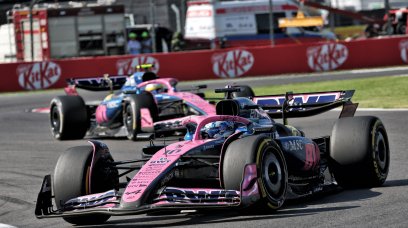Red Bull's car did not seem to be completely at ease throughout the weekend at a renovated Albert Park track. As often mentioned, the peculiar characteristic of the RB18 is its efficiency on the straights and its ability to generate high downforce with the floor. The low downforce configuration, albeit not excessively, caused problems with tyre management and their warm-up phase. From Friday practice, both Red Bull drivers experienced high graining, a sign of thermal and dynamic shock to the compound, initially triggered by imperfect progressive heating in the in-lap phase, then accentuated by lateral sliding due to a low vertical load. It was not optimal, and in any case, the vertical load was lower than that produced overall by the pace-setting Ferrari F1-75. The phenomenon was then very evident in the race, affecting the pace of Max Verstappen - before his retirement - and Sergio Perez.
In terms of developments, Red Bull applied an updated front wing to their car for the weekend (see the image above). It was characterised by new vertical endplates, which have a more rounded profile on the upper edge - their partial curvature towards the outside aimed at increasing the outwash effect - and the adoption of an S-shaped side fin placed higher than the previous, arched version. That said, while the package is delivering performance, it is not currently providing reliability. It remains to be seen whether the issue that is seemingly related to the fuel system again - but as declared by the team , of a different nature to the one experienced in Bahrain - is a consequence of a design failure or the extreme design of the car itself. Two DNFs in three races is, in Verstappen's words, "unacceptable" for a team attempting to fight for the championship. It is now crucial that the Milton Keynes engineers investigate and fix the problem in time for the next race. If they don't find a solution, the high potential of this car could be held back.
Most read








